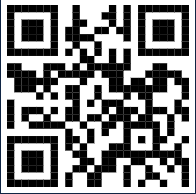Guest post: How ExxonMobil’s procurement team was prepared for business continuity
I’ve been working at ExxonMobil for over fifteen years, and currently lead global maintenance, repair, and operations (MRO) procurement. Over the years, I’ve done my best to help us rise to various challenges. While it’s impossible to prepare for everything, surviving through crises, and managing through good times have at least one thing in common: organizations that digitally transform their procurement processes are better equipped to maintain business continuity through good times and bad.
Over the past few months, organizations of all sizes and across industries have been putting their business continuity plans in practice, including making adjustments in their supply chain, and facilitating alternate work arrangements. One thing that’s been made clear for procurement leaders during this time is how prepared we are to navigate through unforeseen circumstances, and how the processes we’ve established in advance help or hinder us during difficult times. As procurement trends over the past few years have leaned towards advancement of digital transformation and automation, many procurement organizations—including our teams at ExxonMobil—have been working to establish modern solutions that help us operate more effectively regardless of the environment we’re working in.
MRO operations on a global scale
Our MRO group oversees a significant amount of ExxonMobil’s procurement transactions globally, including a portion of ExxonMobil’s capital and operations procurement expenditures. For operations at our scale, we are increasingly looking to technology to help us improve operations and delight our customers. As commercial experts within ExxonMobil, we focus on understanding what the business cares for, how to provide the right products and services, and what types of avenues and contracts are necessary to acquire materials and services to allow operations and projects to proceed smoothly—but there’s always room for improvement, and digital technology is playing an increasingly important role.
For example, we’ve recently implemented a cloud solution to host all our contracts in one place, allowing most of our end users the ability to requisition within a simple user-friendly platform. This cloud-based system allows users to access contracts and transact automatically, regardless of their location, and has replaced the need for manual processes. But a significant number of ExxonMobil’s MRO transactions are considered ‘spot' in nature for the procurement of low-cost consumable items such as small tools, basic lab equipment, office supplies, small nuts and bolts, basic electrical supply, and some personal protective equipment (PPE). Time spent finding, sourcing, and expense reporting these types of items could be better invested on other, more strategic efforts.
Additionally, for spot transactions, we didn’t have the level of visibility into price competitiveness as we had in our more strategic, contract spending. By consolidating all of these transactions to our new procure-to-pay system and allowing users to punch out into Amazon Business to shop for consumable MRO, we’ve been able to increase automation of these routine purchases and gain more visibility into these transactions. Additionally, the store offered by Amazon Business allows our clients to compare multiple consumables MRO suppliers in one place to easily find a competitive price, resulting in a reduction of our transactional costs.
We’ve received positive feedback from clients. Many note the ability to create teams within Amazon increases collaboration, allows for greater visibility into group spend, manages compliance by setting spending limits, and guides users to approved items, to name just a few. More importantly, these processes have helped enable our team to maintain our operations globally, as the current global climate presents challenges to our supply chain. Enabling our procurement system with the right set of digital tools and aligning to reliable supply chains assisted our ability to ensure business continuity.
As a procurement professional, I often talk about the total cost of ownership for items and services. But I’ve noticed that procurement leaders don’t focus enough on the end-to-end cost to fulfill requests for their clients. We’ve embraced technology solutions that could reduce the total cost of procurement for an organization in both time and budget. For example, if you’re buying an expensive item like a turbine, the quality and cost are the most important factors. But, if you’re repeatedly buying inexpensive items, you need to focus on the total cost of those transactions. That means looking at the cost of moving the material from the vendor to the end user. Complex issues like these around cost, scale, and supply chains are what transforming your procurement processes digitally can help you tackle.
These issues and more are persistent factors that a modern, digital procurement system can help organizations address. However, it’s up to our leaders to show their organizations that procurement can extend beyond just the price of items. Indeed, it’s an all-encompassing model of how you’re purchasing what your clients need from start to finish, in a way that makes sense for them, reduces recycle, and delivers value to the bottom line. I’ve found that, during both very challenging and less challenging times, technology and solutions like Amazon Business can help minimize the cost of transactions and augment procurement into a driver of value.
Was this helpful?




